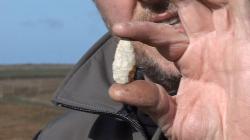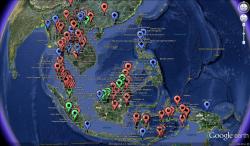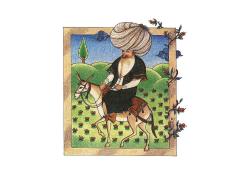INSTITUT SUPERIEUR D'ANTHROPOLOGIE
INSTITUTE OF ANTHROPOLOGY
ONLINE COURSES / COURS A DISTANCE
SPRING SESSION : APRIL 2013
REGISTER NOW
ROYAUME UNI –  Belfast - The big dig on Divis Mountain has already unearthed flints, pottery and other artefacts - proof, say experts, that life once flourished there. "We know that there are pre-historic remains here, we find them all over the hills" said National Trust archaeologist Malachy Conway. "We started finding flints which are probably about 4,000 years old.
Belfast - The big dig on Divis Mountain has already unearthed flints, pottery and other artefacts - proof, say experts, that life once flourished there. "We know that there are pre-historic remains here, we find them all over the hills" said National Trust archaeologist Malachy Conway. "We started finding flints which are probably about 4,000 years old.
http://www.bbc.co.uk/news/uk-northern-ireland-22307836
FRANCE –  Rougon - Le site archéologique de Rougon, découvert sur les berges du lac de Serre-Ponçon lors d’une campagne de prospection, est régulièrement dégradé. En mars et octobre 2012, une quarantaine de trous avaient été réalisés par des utilisateurs de détecteurs de métaux, et une première tranchée avait été creusée le long d’un mur. Une fouille archéologique avait été envisagée et pourrait être réalisée prochainement par la cellule alpine de recherches archéologiques du conseil général des Hautes-Alpes. « Le 1 er avril dernier puis le 16 avril, les pillages ont recommencé », précise Laure Gautier, en charge du service patrimoine de la commune de Chorges, qui a constaté l’état du site. « Ils sont d’une tout autre ampleur, détruisant ainsi irrémédiablement la succession des couches archéologiques et fragilisant la fondation des murs. » L’archéologue départementale, Laurence Pinet, rappelle que « le pillage mutile le patrimoine archéologique enfoui, et gaspille, pour des intérêts privés, une ressource publique, et non renouvelable ». De plus, « ce site d’importance majeure est capital pour la compréhension de l’occupation humaine dans la moyenne Durance. La destruction du site de Rougon détruit ce jalon de l’histoire romaine en vallée de la Durance, les vestiges de cette époque étant isolés et peu nombreux », ajoute l’archéologue Karine Raynaud. Le site de Rougon, noyé lors de la mise en eau du lac de Serre-Ponçon en 1963, disparaît une seconde fois sous les coups de pioche des pilleurs de patrimoine : « C’est irréversible et inadmissible », déplore Karine Raynaud.
Rougon - Le site archéologique de Rougon, découvert sur les berges du lac de Serre-Ponçon lors d’une campagne de prospection, est régulièrement dégradé. En mars et octobre 2012, une quarantaine de trous avaient été réalisés par des utilisateurs de détecteurs de métaux, et une première tranchée avait été creusée le long d’un mur. Une fouille archéologique avait été envisagée et pourrait être réalisée prochainement par la cellule alpine de recherches archéologiques du conseil général des Hautes-Alpes. « Le 1 er avril dernier puis le 16 avril, les pillages ont recommencé », précise Laure Gautier, en charge du service patrimoine de la commune de Chorges, qui a constaté l’état du site. « Ils sont d’une tout autre ampleur, détruisant ainsi irrémédiablement la succession des couches archéologiques et fragilisant la fondation des murs. » L’archéologue départementale, Laurence Pinet, rappelle que « le pillage mutile le patrimoine archéologique enfoui, et gaspille, pour des intérêts privés, une ressource publique, et non renouvelable ». De plus, « ce site d’importance majeure est capital pour la compréhension de l’occupation humaine dans la moyenne Durance. La destruction du site de Rougon détruit ce jalon de l’histoire romaine en vallée de la Durance, les vestiges de cette époque étant isolés et peu nombreux », ajoute l’archéologue Karine Raynaud. Le site de Rougon, noyé lors de la mise en eau du lac de Serre-Ponçon en 1963, disparaît une seconde fois sous les coups de pioche des pilleurs de patrimoine : « C’est irréversible et inadmissible », déplore Karine Raynaud.
http://www.ledauphine.com/hautes-alpes/2013/04/25/pillages-repetes-d-un-site-archeologique-habituellement-sous-les-eaux
ASIE DU SUD-EST –  Something I’m working on at the moment is to try georeferencing every mention of a rock art site in Southeast Asia on a Google Earth map. Heres the current work in progress. Reds are painted and drawn sites, Blues are petroglyphs, and Greens are megaliths. I have been on record before saying there are at least 400-600 known sites in the region. My current count is somewhere close to 1,400. Now that’s a lot of rock art.
Something I’m working on at the moment is to try georeferencing every mention of a rock art site in Southeast Asia on a Google Earth map. Heres the current work in progress. Reds are painted and drawn sites, Blues are petroglyphs, and Greens are megaliths. I have been on record before saying there are at least 400-600 known sites in the region. My current count is somewhere close to 1,400. Now that’s a lot of rock art.
http://www.southeastasianarchaeology.com/2013/04/29/now-thats-a-lot-of-rock-art/
TURQUIE –  Sivrihisar - A stone sarcophagus found in Sivrihisar, in the Turkish province of Eskisehir, is believed to have hosted the body of famous 13th century wiseman Nasreddin Hodja.The sarcophagus had been found in an old graveyard during a construction and was kept in the library of the Ulu Mosque. “We removed the bones of his daughter of Fatma Hatun, in 2003 from a graveyard in Sivrihisar and delivered them to a museum. An area 50 meters away from this grave was reorganized by the municipality years ago and this coffin was uncovered. Examinations showed that the coffin belonged to Nasreddin Hodja,” says Anadolu University Professor Erol Altınsapan. According to Prof. Altinsapan, Aksehir was known as the birth and death place of Nasreddin Hodja but from now on Sivrihisar should be recorded as the place where he was born and died. “It was a big discovery for the Turkish worldâ”, he adds. Nasreddin Hodja has been a popular character in Turkey and other countries once belonging to the Ottoman Empire, including Greece. He is believed to have been a sufi and he is connected to didactic stories and jokes.
Sivrihisar - A stone sarcophagus found in Sivrihisar, in the Turkish province of Eskisehir, is believed to have hosted the body of famous 13th century wiseman Nasreddin Hodja.The sarcophagus had been found in an old graveyard during a construction and was kept in the library of the Ulu Mosque. “We removed the bones of his daughter of Fatma Hatun, in 2003 from a graveyard in Sivrihisar and delivered them to a museum. An area 50 meters away from this grave was reorganized by the municipality years ago and this coffin was uncovered. Examinations showed that the coffin belonged to Nasreddin Hodja,” says Anadolu University Professor Erol Altınsapan. According to Prof. Altinsapan, Aksehir was known as the birth and death place of Nasreddin Hodja but from now on Sivrihisar should be recorded as the place where he was born and died. “It was a big discovery for the Turkish worldâ”, he adds. Nasreddin Hodja has been a popular character in Turkey and other countries once belonging to the Ottoman Empire, including Greece. He is believed to have been a sufi and he is connected to didactic stories and jokes.
http://www.archaiologia.gr/en/blog/2013/04/29/nasreddin-hodja%E2%80%99s-tomb-found-in-sivrihisar/